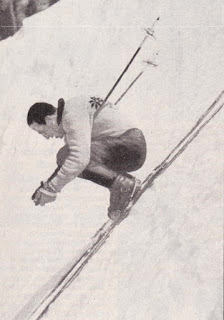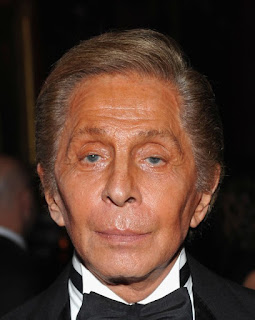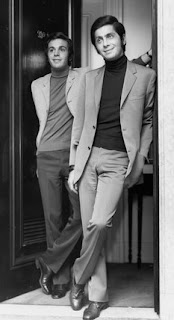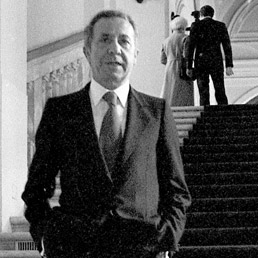Centre forward helped Inter win first European Cup
 |
| Aurelio Milano scored Inter's second goal in the 1964 European Cup final in Vienna |
Inter beat Real Madrid 3-1 in the final Vienna in 1964 to emulate the achievement of city rivals AC Milan, who had become the first European champions from Italy the previous year.
Milani, a centre forward, scored the all-important second goal in the 61st minute after his fellow attacker Sandro Mazzola had given Inter the lead in the first half, receiving a pass from Mazzola before beating Real goalkeeper Vicente Train with a shot from outside the penalty area.
Madrid, whose forward line was still led by the mighty Alfredo di Stefano with Ferenc Puskas playing at inside-left, pulled a goal back but Mazzola added a third for Inter.
But this was the so-called Grande Inter side managed by the Argentinian master-tactician Helenio Herrera, who coached them to three Serie A titles in four years and retained the European Cup by defeating Eusebio’s Benfica 12 months later, when the final was played in their home stadium at San Siro in Milan.
Sadly, Milani could not be on the field on that occasion. Playing against Dinamo Bucharest in San Siro in November, he scored the final goal in a resounding 6-0 win for Inter only to suffer a displaced vertebra in a collision with another player, the injury serious enough effectively to end his career at the age of 31.
 |
| Milani (right) with goalkeeper Giuliano Sarti, who would join him at Inter, and coach Nandor Hidegkuti, at Fiorentina |
Milani had begun his career with his local club, Aurora Desio, in their youth side before being scouted by the Bergamo team, Atalanta, who loaned him to another Lombardy club Fanfulla, based in the city of Lodi. In 1955 he was sold to Simmenthal Monza, for whom he scored 37 times over two Serie B seasons. Those figures earned him his first move outside Lombardy, to Triestina in Friuli, where he scored 17 goals in 30 Serie B appearances in his first and only season.
By now he was regularly attracting scouts from Serie A and signed for Sampdoria, where he proved he could be an equally effective striker at the top level, with 13 goals in his debut season. Injury blighted his second season but his talents were not forgotten and after one year with Padova, where he scored another 18 goals, he earned his move to Fiorentina in the summer of 1961.
Interestingly, his first two goals in the famous purple shirt of the viola were also the first two goals conceded in the career of the legendary Italy goalkeeper Dino Zoff, who was making his professional debut for opponents Udinese, aged 19.
After his injury in 1964 he attempted a comeback in the lower divisions with the Piedmont club Verbania but after eight appearances he decided to call it a day.
Milani, who had made his international debut a few months before the injury, which denied the chance to add to his debut cap in a friendly against Switzerland, died at his home in Borgo Ticino, near Lake Maggiore, in 2014 at the age of 80.
 |
| The Villa Tittoni Traversi, the former royal palace at Desio |
Desio, a town of 42,000 inhabitants that built its prosperity around the wool and silk industries, is historically significant for having been the site of a battle in 1277 between the Visconti and della Torre families for control of Milan. The birthplace of Pope Pius XI. There is an impressive basilica, dedicated to the Saints Siro and Materno, in the centre of the town in Piazza Conciliazione. Also worthy of a visit is the Villa Tittoni Traversi, a former royal palace that has been home to King Ferdinand IV of Naples and King Umberto I of Italy.
Travel tip:
Situated 32km (20 miles) south of Lake Maggiore, Borgo Ticino is a small town of fewer than 5,000 people. Nearby attractions include the pretty lakeside towns of Arona and Angera and the Volandia Museum of Flight in Somma Lombardo, close to Milan Malpensa airport, which houses 45 aircraft.
More reading:
Why Giuseppe Meazza was Italian football's first superstar
Dino Zoff - the record-breaking career of football's oldest World Cup winner
The unparalleled success of former Inter coach Giovanni Trapattoni
Also on this day:
1916: The birth of architect and designer Marco Zanuso
Home
























